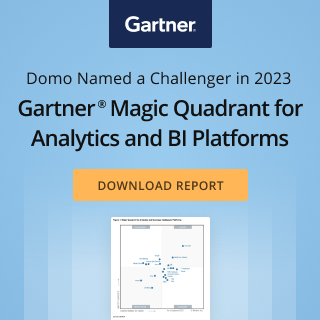IT Leads and BI Analysts Versus Dark Data

Search for the definition of business intelligence and you may see phrases such as ‘BI technologies provide historical, current, and predictive views of business operations. A potentially very powerful model that can provide a strong competitive advantage to any enterprise—when implemented properly.
BI analysts or IT leads are constantly looking for where data resides in the business—once found, the problem solving then moves to the time it takes to extract and make sense of it. So where exactly is data hiding? And how can we close the ‘time to value’ gap?
A business intelligence analyst’s main role is to analyze data for the purpose of identifying areas where an organization can improve. Each department lead in its own right is already doing this—the CMO is provided reports made from social and EDM marketing data, the head of sales is given revenue and forecast data from sales tools, and the CFO is often provided with updated spreadsheets.

The first challenge faced by BI analysts and IT leads, is how to get a holistic view of this data in order to identify opportunities. A holistic and integrated view of data opens up the ability to uncover bespoke opportunities for the business that may not have otherwise been seen. Beyond spotting trends, it dramatically cuts down the time from discovery to implementation.
BI tools and strategies are used across enterprises with the ultimate goal of better utilizing data. There are, however, levels of scale in which opportunities can be taken advantage of. BI analysis in a traditional sense can achieve strong strategic direction based on historical data, yet the informed decision is arguably dated compared to enterprises which have access to live data dashboards, allowing decisions to be made against an agile market.
Platforms such as Domo provide the flexibility of handling data which isn’t suitable for the enterprise data warehouse, but with all the controls (row level access, usage reporting, and so on) that the enterprise data warehouse provides to IT leadership for its data. This results in less tickets being raised to the IT department for ad hoc requests, dropping the time to value. An example of this is aligning live sales figures with marketing and website optimization.
To capitalize on this, enterprises need live data—raising tickets to the IT department to pull reflective data only highlights the reason why sales figures spiked, as opposed to optimizing the strategy in the moment to take further advantage.

Achieving one source of truth
For many enterprises, BI analysis is formed of multiple ‘quick fixes’ delivered from native platforms, such as Google Analytics, Facebook Insights, Salesforce dashboards, Financial / invoicing apps. The challenge is the manual process of finding the red thread throughout all the data, spotting the patterns and understanding where strategy should change. The answer is to harness and keep the intricate data provided by the third-party platforms and integrate it into one ‘source of truth’.
Platforms such as Domo help BI analysts and IT leads create cohesive, versatile datasets from disparate, disjointed source data. This provides the ability to build an architecture with minimal points of failure, allowing for quick maintenance and faster iteration.
The results? Optimal ETL and data pipeline performance, benefitting from data flow engines and API connectors. By writing data back to the data lake, it breaks down silos between the general enterprise workforce and the BI and IT lead teams. This broken down barrier then fosters a data driven culture based on trusted and governed data—encouraging in-the-moment decisions based on a live dashboard.

Brought to life—by connecting third-party apps into the Domo platform through its API engines—the work can be automated, which leads to a quick time to value. For example, setting automated alerts, flagging when there is a change in pattern, or if figures are going above or below set benchmarks.
Beyond this, it decreases the reliance and time it takes for IT departments to produce reports, as direct-from-source data allows for real-time reporting, for example when underlying data sets change, everything is updated accordingly. This direct-from-source data also provides the ability to publish dashboards externally, opening up new opportunities with customers and their end users.
Find out more about Domo’s data integration offering here.
